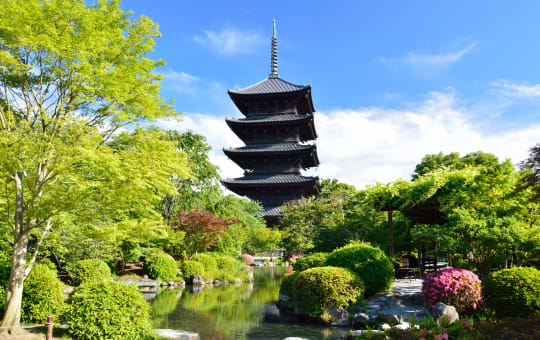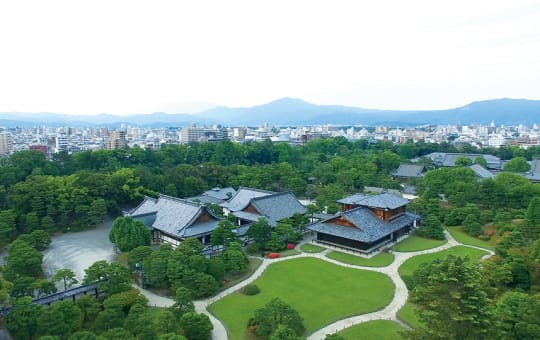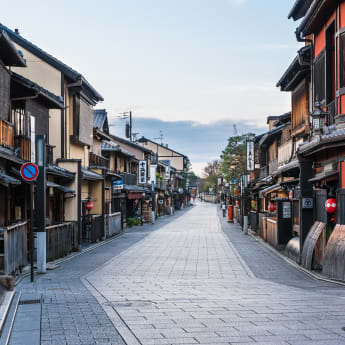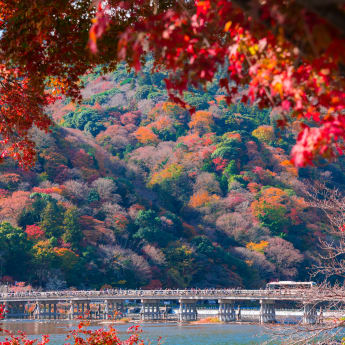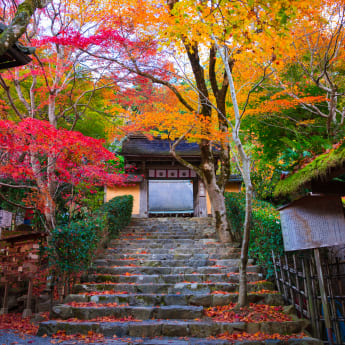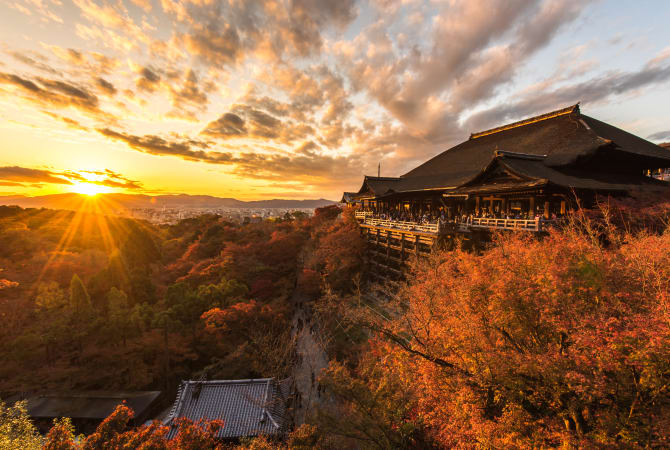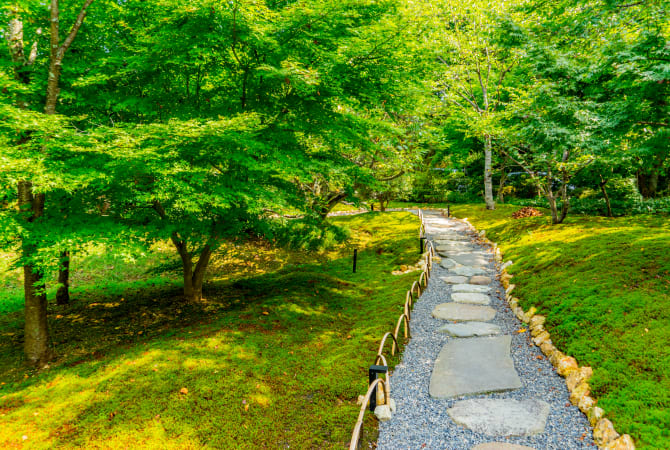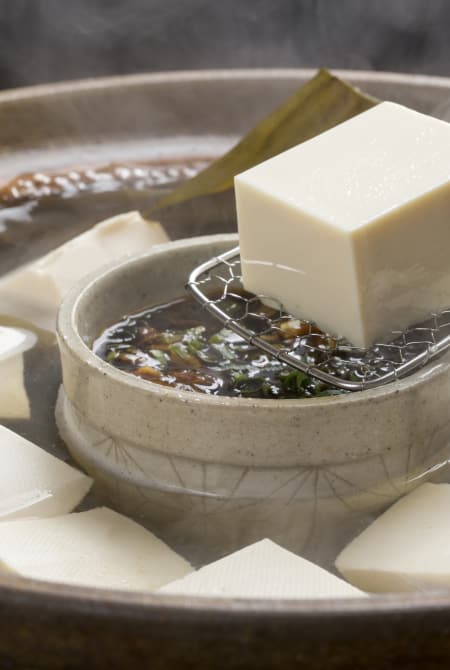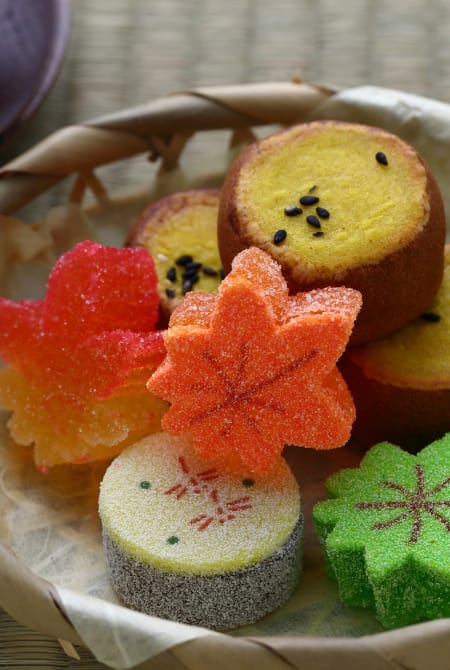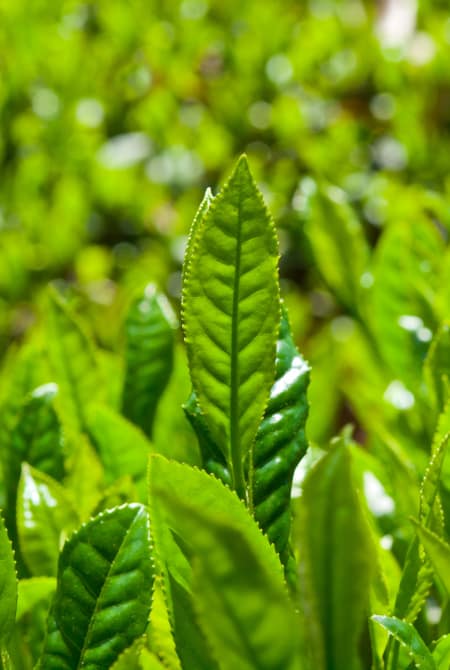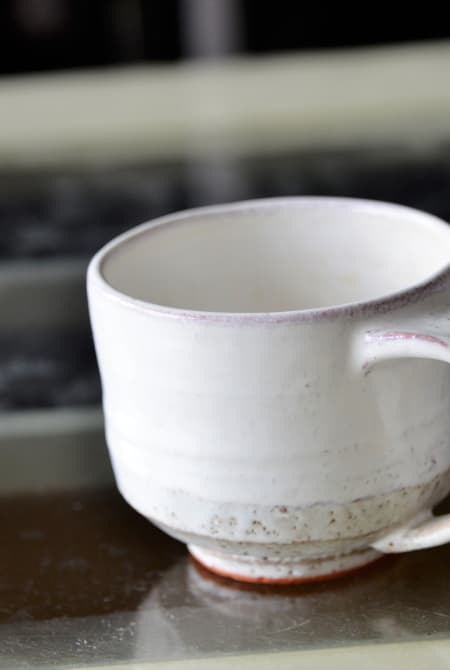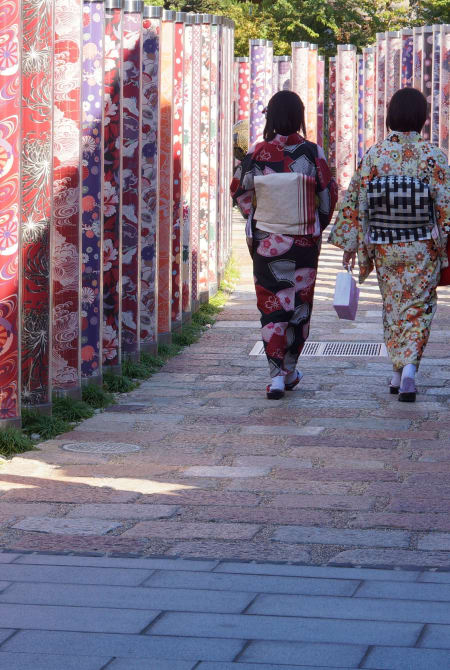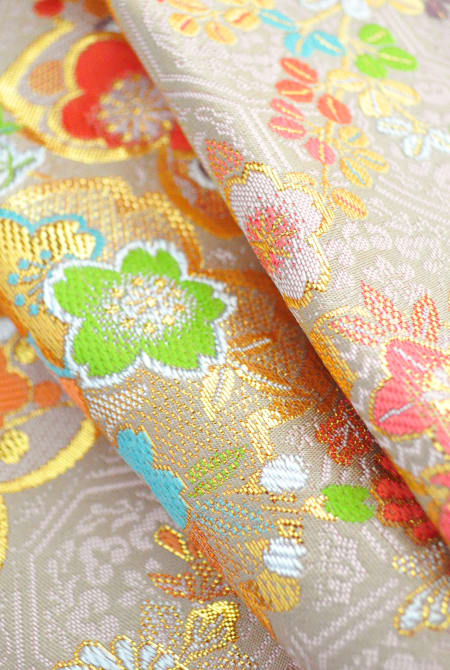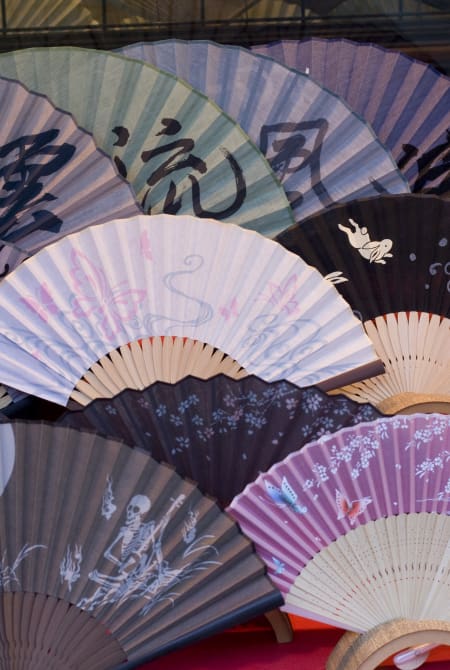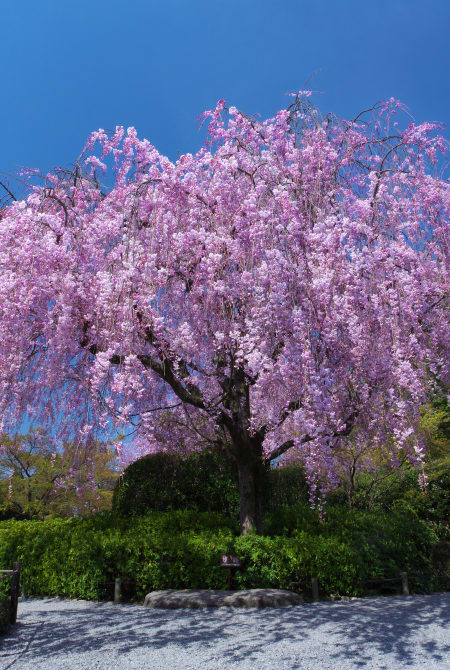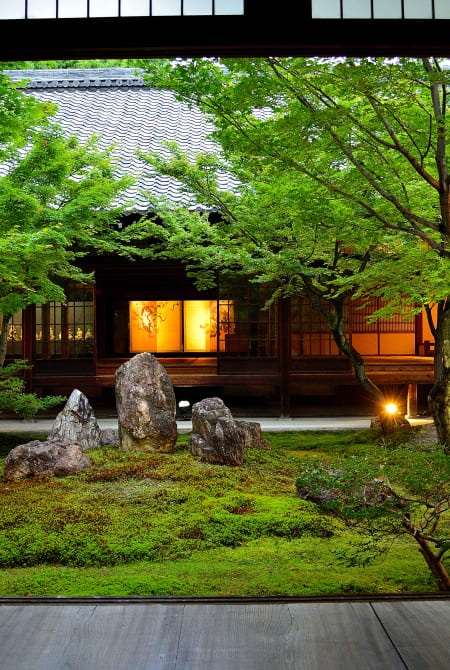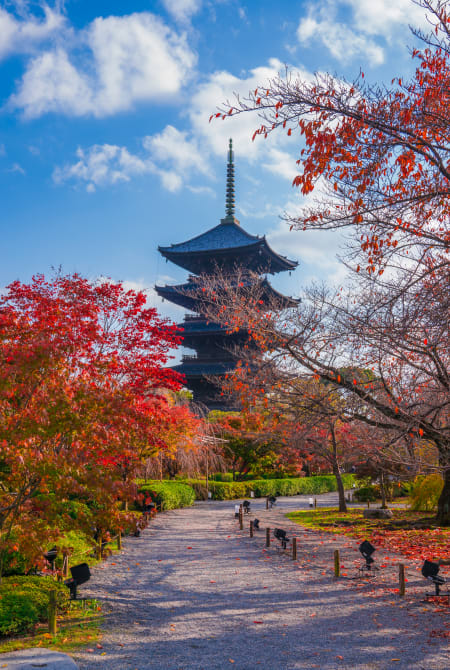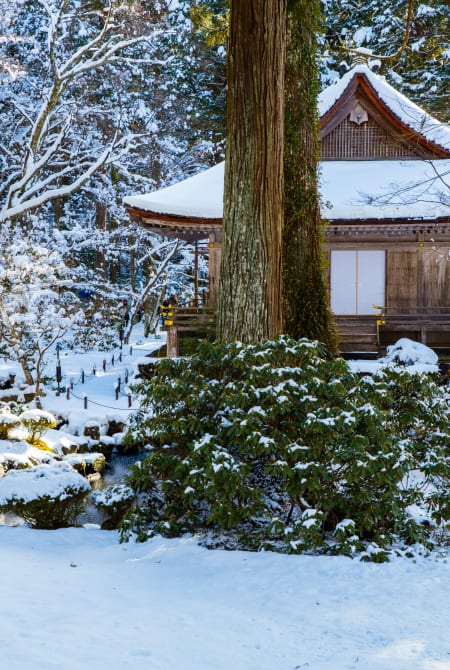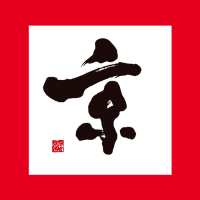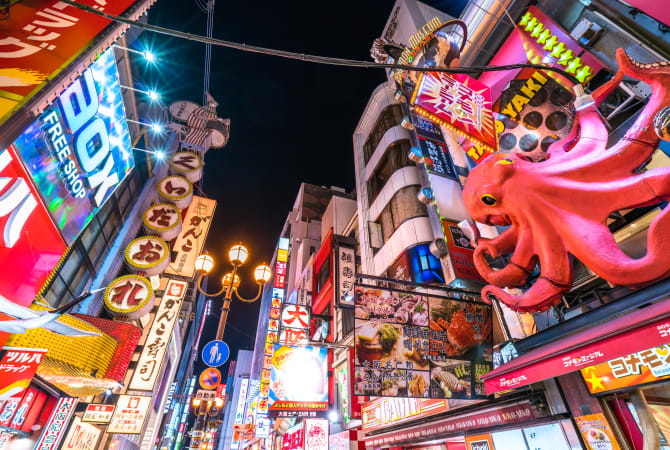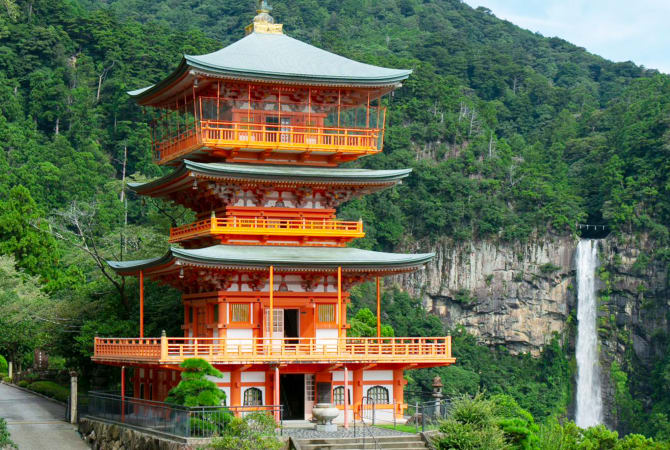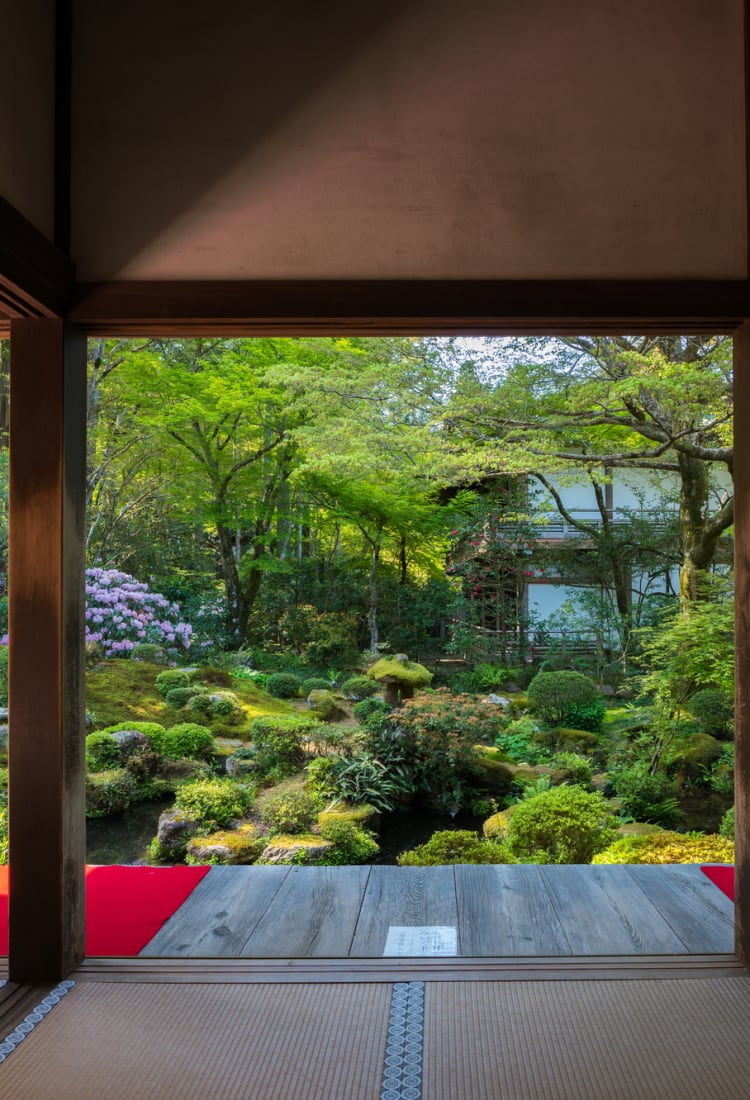

Kansai Kyoto A New Guide to Traveling Around Kyoto
Experience the essence of Japanese culture, constantly evolving throughout history
Surrounded by rich natural beauty, Kyoto is a city with a unique repertoire of compelling culture that has been refined over the past 1,200 years. Many aspects of Japanese culture originate from Kyoto and are deeply rooted in the lives of residents to this day. Tradition lives on through “machiya,” traditional wooden townhouses where residents spend modern lives today, yearly events unique to Kyoto like the famous Gion Matsuri , the culture of Kyoto's Hanamachi district where geisha live and work, and through Jizo statues (statues made of clay, bronze or stone that represent the guardian deity of children and travelers) found throughout the city. Kyoto's tradition adds color to everyday life through Japanese food – which is generally healthy and has good nutritional balance – as well as an appreciation for tea, and flower arrangements placed tastefully in open spaces. By experiencing this kaleidoscopic culture firsthand, travelers can enjoy a deeper perspective on Kyoto and its history.
To enjoy the charms that Kyoto has to offer, it's recommended to make use of less busy times to visit shrines – early in the morning, or late at night when they're lit up, for example. Additionally, you can divide Kyoto into a number of areas, complete with their own unique beauty and charm. In central Kyoto , there are a number of historic buildings and unforgettable pristine old townscapes for travelers to visit.
There are also a number of hidden gems unique to each region outside of central Kyoto. In northern Kyoto, the boundless natural beauty of the Keihoku and Miyama areas are complemented by a traditional Japanese countryside landscape. Further north in the region near the Sea of Japan, travelers can enjoy Amanohashidate's sandbar and Ine's boathouses . In southern Kyoto, visitors can taste traditional sake from Fushimi, which is one of Japan's three major sake brewery locations, as well as enjoy Japanese tea from Uji . To the west, visitors can experience the charm of Kyoto's bamboo forests and rural landscapes, as well as temples and shrines with deep histories in the Nishiyama Area. Unparalleled hidden gems await you outside of central Kyoto!
When visiting Kyoto, it's best to keep in mind that many local residents call this ancient city home. To enjoy your trip to the fullest, please show consideration to local communities and mind your manners to help preserve Kyoto's culture and keep tourism sustainable moving forward.
Due to Kyoto's increasing popularity, the city sometimes has an excessive concentration of tourists during particular times and seasons, or in certain areas – making life difficult for locals, and potentially damaging to natural environments.
To experience the quiet and serene beauty of Kyoto, make use of the Kyoto Travel Congestion Forecast map to check when popular spots are crowded, including live cameras to check how busy places are in real time. It's also recommended to visit popular temples in the early morning when they open, or to explore the other compelling areas outside of central Kyoto to help reduce crowds. In addition, taking advantage of Japan's trains and buses is a convenient way to get around the city. There are also a number of coin lockers and luggage storage facilities around rail stations that visitors can use. By leaving your luggage at these storage facilities, not only does it make it possible to enjoy Kyoto without needing to carry luggage around town, but it also helps reduce congestion on public transportation and makes space for more people to ride.
When in the Gion and Higashiyama areas, you might see a “geiko” (geisha in Kyoto's dialect) or “maiko” (geisha in training) pass by. While you may be tempted to ask them for a photo, please refrain from stopping them and asking them for photos or touching their clothes since these lovely ladies are often in a hurry to get to their next appointment. If you'd like to get the chance to talk to a maiko or take pictures with them, consider booking a maiko experience or activity at Gion Corner instead. At Nishiki Market , while you may be tempted to enjoy your purchase while you explore the market, please eat any food at the store where it was purchased and dispose of the trash on site. As littering is strictly prohibited, it might be smart to bring a plastic bag for trash in case you can't find a trashcan nearby.
Throughout Kyoto, be aware that smoking on the street is strictly prohibited, and there are penalties for smoking outside designated areas in the city center, including the Kiyomizu and Gion areas and around Kyoto Station . If you need to smoke, please find a designated smoking area first or you may be fined for smoking outdoors. Finally, please do not trespass onto private property, or interfere with residents' private lives, especially around Gion and the Ine boathouses. Local residents are sharing their community with visitors, so please show consideration to these communities and respect their spaces and property. (Click here for a message from Southern Gion)
How to Get There
The nearest airports are Itami and Kansai International , both in Osaka Prefecture, and are located between 1 hour and 1.5 hours away, respectively.
Thanks to Kyoto Prefecture's vast transportation network, it's easy to uncover Kyoto's hidden charms, or visit the Another Kyoto area. The Ohara , Takao and Northern Kyoto areas are easily accessed by bus from Kyoto Station, and those looking to get to Miyama can take a bus from the Northern Kyoto area. The Yamashina Ward, Fushimi and Uji areas, as well as western Kyoto areas, are all accessible by train. To reach the Amanohashidate and Miyama areas, travelers will need to take the JR San'in Honsen Line, then change trains or use a bus, so it's recommended to plan in advance if you'd like to visit these areas.
Don’t Miss
- Kyoto’s grand shrines, ancient castles and historical streets
- Ohara’s crisp mountain air, stunning autumn foliage and symbolic gardens
- Kyoto’s traditional Japanese inns, an essential convergence of Japanese tradition and culture
- Kyoto cuisine, which perfectly encapsulates the Japanese spirit and art of food preparation
- The four alternative views of Kyoto: Kyoto by the Sea, Woodland Kyoto, Tea Country Kyoto and Kyoto Otokuni Bamboo Groves
Explore Kyoto by Area
Trending Attractions in Kyoto
Local Specialties
-
Yudofu
Yudofu, literally "hot-water tofu", is arguably the best way to enjoy high-quality, freshly made tofu. Tofu is warmed through in a simple broth made of water and kombu, and simple condiments are served alongside. Kyoto is the place to enjoy this, as it is the epicenter of Buddhist cuisine, in which yudofu features heavily.

-
Kyo-Gashi
Kyo-gashi are a type of wagashi, or traditional Japanese sweet. Kyo-gashi are beautiful, colorful and symbolic confections, custom-made for different occasions, so no Kyo-gashi will ever be exactly the same as another.

-
Kyo-Yasai
Before modern transportation was available, farmers grew only the vegetables most suited to the regions they farmed in. Kyo-yasai are vegetables traditionally grown in Kyoto for centuries, and they play an important role in modern Kyoto cuisine.

-
Uji Tea
Green tea from Uji is among the oldest and most highly regarded teas in Japan. You'll find it in tiny soba restaurants and temple gardens and many places in between. There are a variety of ways to enjoy green tea while in Uji.

-
Kyoto Kiyomizu Ware
Handmade ceramics and porcelain made in Kyoto are known as kyo yaki or Kiyomizu yaki and are characterized by their gorgeous elegance made with advanced pottery techniques. This craft evolved alongside other sophisticated pastimes in Kyoto, including the tea ceremony and flower arranging.

-
Kyoto Dyed Silk
Invented in the late 17th century, kyo yuzen is a dyeing technique distinguished by vivid colors, subtle gradations, complex patterns and precision linework. Traditional Japanese painting-like patterns are expressed in the textile design.

-
Nishijin Textiles
Nishijin ori silk textiles originate in Nishijin, the garment district of Kyoto. Exquisitely decorated brocades have been handwoven here for centuries, and feature gorgeous patterns utilizing multi-colored yarn-dyed threads. Treated with care, these garments can last a lifetime.

-
Kyoto Folding Fans
Fashioned out of bamboo, the kyo sensu is a folding fan decorated with handmade Japanese paper or silk on thin wooden strips, traditionally cypress. These artful accessories are used at ceremonies, festivals and Noh performances.

Seasonal Highlights
-
Spring
Late April to May is the time to view late-blooming cherry blossoms, yaezakura (double-flowered cherry blossoms) and the fresh green maple leaves in shrine and temple gardens.

-
Summer
Highlights of the hottest season include riverside dining, cormorant fishing performances, beach excursions, the month-long Gion Festival, and fire displays to honor the spirits of ancestors.

-
Autumn
Kyoto’s autumn foliage attracts visitors from the world over. Harvest moon festivals are another autumn highlight. The cool temperatures are perfect for hiking at Mt. Ponpon and Mt. Atago.

-
Winter
Kabuki’s biggest stars come to perform, plum blossoms emerge after the snows, and countryside onsen offer plenty of warmth.





























































